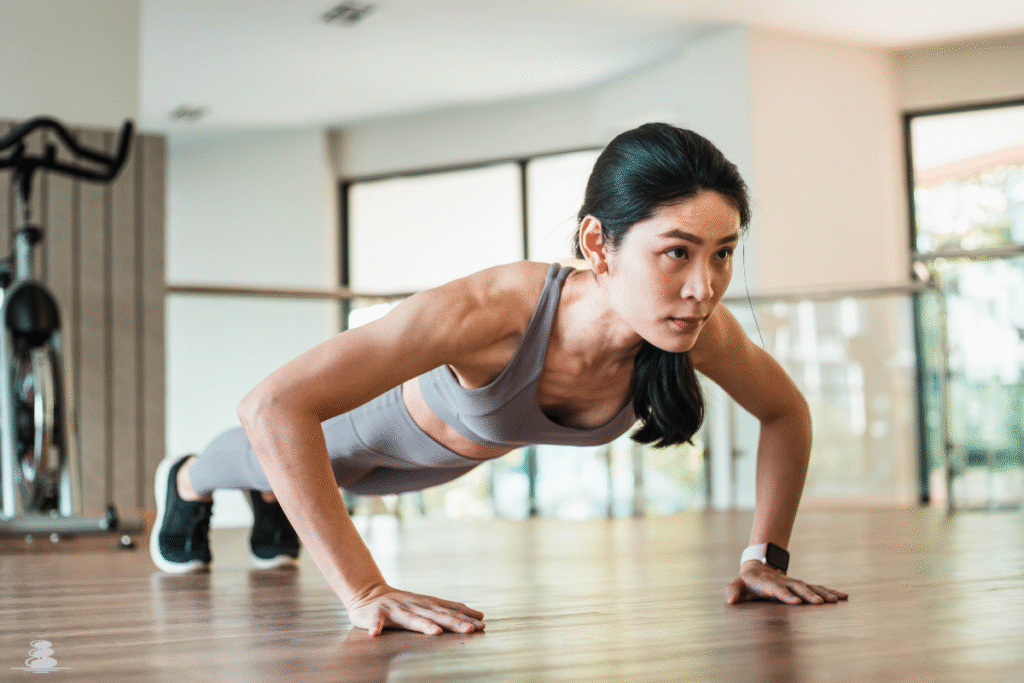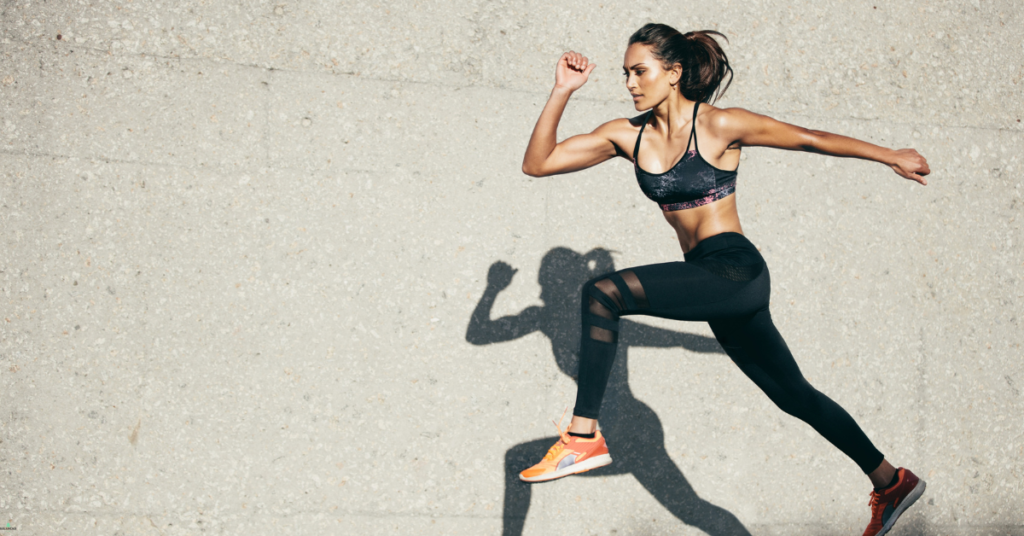What is Calisthenics?
Looking to get stronger, leaner, and more mobile — without stepping foot in a gym? A calisthenics workout might be exactly what you need. This powerful form of bodyweight training has been around for centuries, used by warriors, athletes, and now fitness lovers all over the world. It’s simple, effective, and incredibly versatile — no machines, no weights, just you and your body.
But what is calisthenics, exactly? At its core, calisthenics is a workout style based on natural movements like push-ups, pull-ups, squats, lunges, and planks. These calisthenics exercises use your own body weight as resistance to build strength, endurance, balance, flexibility, and coordination. You can practice it anywhere — at home, in the park, or even while traveling — which makes it one of the most accessible fitness methods out there.

Whether you’re a complete beginner or already active, calisthenics offers endless progression. Start small, master your form, and over time, you can level up to impressive skills like handstands, muscle-ups, and more. Plus, it’s fun, functional, and free — making it the perfect choice for anyone ready to take control of their fitness journey.
Benefits of Calisthenics Training
Calisthenics isn’t just a trend — it’s a lifestyle that delivers results. This form of bodyweight training offers a wide range of physical and mental benefits, making it one of the most well-rounded workout styles out there. Here’s a deeper look at why calisthenics deserves a spot in your fitness routine:
1. Builds Functional, Real-World Strength
Unlike isolated machine exercises, calisthenics engages multiple muscle groups at once through compound movements. This helps you develop strength that translates into everyday activities — like carrying groceries, lifting your kids, or playing sports. You’re not just getting stronger, you’re getting strong in the ways that matter most.
2. Burns Fat While Building Lean Muscle
Since calisthenics exercises often involve your entire body, they naturally burn more calories and increase your heart rate. Movements like burpees, mountain climbers, and jumping squats not only build muscle but also torch fat — making it a great option for those looking to sculpt a lean, athletic physique.
3. Improves Flexibility and Mobility
Many calisthenics exercises involve full-body motion, which helps improve joint mobility, muscle flexibility, and overall range of motion. Movements like deep bodyweight squats, lunges, and active stretching make your body more agile and less prone to injury.
4. Enhances Body Awareness and Coordination
Mastering calisthenics means learning to control your body with precision. This builds a strong mind-muscle connection, increases balance, and sharpens coordination. Over time, you’ll move more gracefully and efficiently — not just during workouts, but in daily life too.
5. Low Risk of Injury (When Done Correctly)
Because calisthenics doesn’t involve heavy external weights, it reduces the risk of injury — especially for beginners. Movements can be scaled to your ability and gradually progressed as you get stronger, promoting safe and sustainable development.
6. Can Be Done Anywhere, Anytime
Whether you’re at home, in a hotel room, or at a park, your workout goes wherever you go. Calisthenics frees you from needing a gym, expensive gear, or rigid schedules. All you need is your body and a little space to move.
7. Completely Free
No gym fees, no personal trainers, no equipment costs — calisthenics is 100% budget-friendly. All the tools you need are already built into your body. Fitness has never been more accessible.
8. Mental Boost and Confidence Builder
Each milestone in calisthenics — from your first proper push-up to your first pull-up — gives you a surge of confidence and motivation. The visible progress and physical control you gain boost self-esteem, sharpen mental discipline, and help manage stress.
Whether your goal is to get toned, increase strength, move better, or simply feel more confident in your body — calisthenics has something to offer everyone. It’s not just a workout; it’s a foundation for lifelong fitness and freedom.
Contraindications: When to Be Cautious
While calisthenics is generally safe, beginner-friendly, and adaptable, there are certain situations where extra care should be taken before diving into a new bodyweight training routine. Understanding your body’s needs and limitations is essential for staying safe and making steady progress.
Here are a few cases where it’s important to proceed with caution — or consult a healthcare professional first:
1. Pre-existing Injuries or Joint Pain
If you’re dealing with previous or chronic injuries — especially in the shoulders, wrists, knees, or lower back — some calisthenics exercises may put too much stress on sensitive areas. For example, push-ups and dips can aggravate shoulder issues, while planks and handstands can strain the wrists.
Tip: Always warm up properly, avoid painful movements, and work with modified versions of exercises. Consider consulting a physiotherapist for a personalized approach.
2. Severe Obesity or Limited Mobility
Calisthenics involves moving your entire body — which can be very challenging if you’re carrying significant extra weight or have limited range of motion.
Tip: Start with gentle, low-impact variations, such as wall push-ups, chair-assisted squats, or incline planks. Slow progression, consistency, and patience are key. You’re still doing powerful work, no matter your starting point!
3. Heart Conditions or Other Medical Conditions
If you have a history of cardiovascular issues, hypertension, or other chronic medical conditions, intense physical activity like high-rep calisthenics circuits or plyometrics may not be advisable without professional guidance.
Tip: Always get the green light from your doctor or healthcare provider before starting a new fitness regimen. They may recommend a modified program suited to your needs.
4. Pregnancy (Especially in the Third Trimester)
During pregnancy, especially in later stages, your center of gravity shifts, your joints loosen (thanks to hormones like relaxin), and your balance may be compromised. Certain calisthenics exercises, like jumping, deep squats, or core-intensive moves (like planks or leg raises), might not be suitable.
Tip: Focus on gentle, supportive movements and consult a prenatal fitness specialist. Your body is already doing something amazing — honor its needs during this time.
5. Mental Health and Motivation
If you’re feeling mentally or emotionally drained, pushing through a high-intensity workout might not be the best move. While exercise can support mental health, it’s also important to respect your mental energy levels.
Tip: Start small, move intuitively, and don’t pressure yourself to “go hard” every time. Calisthenics is flexible — it can meet you where you are.
6. Listen to Your Body
One of the greatest strengths of calisthenics is that it can be completely customized to your current level, whether you’re a total beginner or returning after a break. If something doesn’t feel right — stop, modify, or consult a professional. Fitness is a lifelong journey, and taking care of your body today ensures you’ll keep moving strong tomorrow.
Who Can Practice Calisthenics?

The short answer? Almost everyone. That’s the true magic of calisthenics — it’s one of the most inclusive and adaptable forms of exercise out there. Whether you’re a total newbie, a weekend warrior, or a seasoned athlete, calisthenics meets you exactly where you are and grows with you.
1. Beginners: Starting with the Basics
If you’re just beginning your fitness journey, calisthenics offers the perfect way to build a strong foundation. There’s no pressure to master advanced moves from the start — you’ll begin with gentle, accessible exercises that still deliver powerful results.
Great beginner-friendly calisthenics exercises include:
- Wall push-ups
- Chair-assisted squats
- Incline planks
- Step-ups using a low surface
- Glute bridges
With consistent practice, you’ll gain strength, improve coordination, and build the confidence to progress further.
2. Intermediate Level: Stepping It Up
Once you’ve built up a base level of strength and control, you can start adding more dynamic movements and exploring moderate intensity variations. This stage is where many people fall in love with calisthenics — progress is visible and exciting.
Try exercises like:
- Standard push-ups
- Bench dips or parallel bar dips
- Bodyweight lunges
- Pike push-ups
- Hanging knee raises
- Jump squats
These moves challenge your muscles in new ways while keeping workouts fun, varied, and goal-driven.
3. Advanced Athletes: Unlocking Mastery
For experienced fitness enthusiasts or athletes, calisthenics offers endless opportunities to test and expand your physical limits. Many advanced moves require not just strength, but also balance, coordination, and total body control.
Advanced calisthenics skills include:
- Muscle-ups
- Handstand push-ups
- Front and back levers
- Planche holds
- Human flag
- One-arm push-ups and pull-ups
These skills take time, patience, and practice — but the journey is incredibly rewarding.
4. Calisthenics for All Ages
One of the best things about calisthenics? It’s suitable for nearly all age groups — with the right modifications:
- Kids and Teens can build healthy habits early with playful, bodyweight-based activities that develop strength, coordination, and body awareness.
- Adults can stay strong and mobile without the need for complicated gym routines or heavy lifting.
- Seniors benefit from calisthenics too! With proper progression and supervision, bodyweight exercises can help improve balance, mobility, and independence as we age.
Adaptability Is the Key
No matter your age, background, or fitness level, calisthenics can be scaled up or down to meet your needs. Whether you want a gentle way to move your body or an intense workout that pushes your limits, calisthenics delivers.
All you need is your body, consistency, and the willingness to move. The possibilities? Endless.
Conclusion: Why Calisthenics Might Be Your New Fitness Obsession
Whether you’re just starting your fitness journey or looking to shake up your workout routine, calisthenics offers a powerful, accessible, and fun way to move your body. It’s about mastering control, building strength, and improving overall wellness — all with zero equipment and total freedom.
So roll out your mat, step outside, or find a space in your living room and start where you are. Your strongest self is already within you — calisthenics just helps bring it to the surface.
30 MIN UPPER BODY TONING CALISTHENICS WORKOUT – Bodyweight Only, No Equipment



